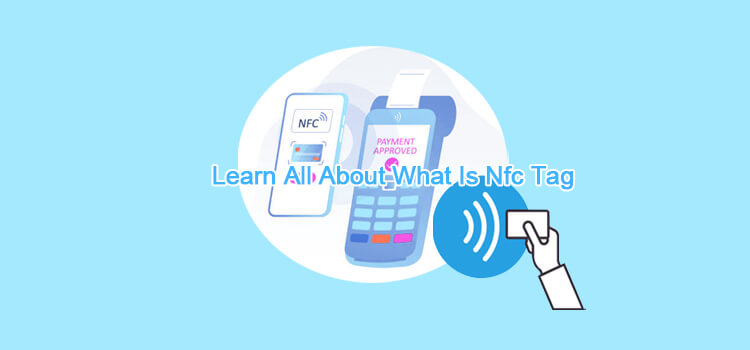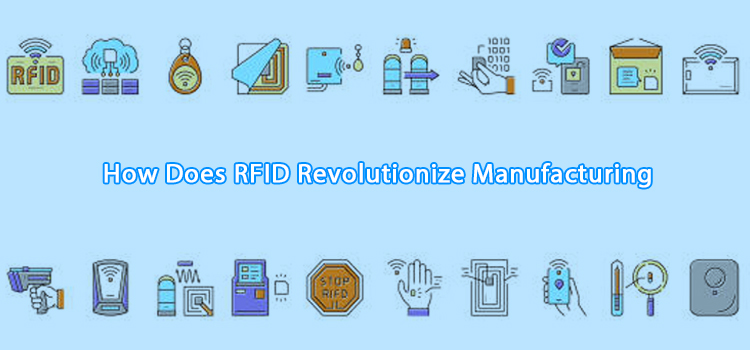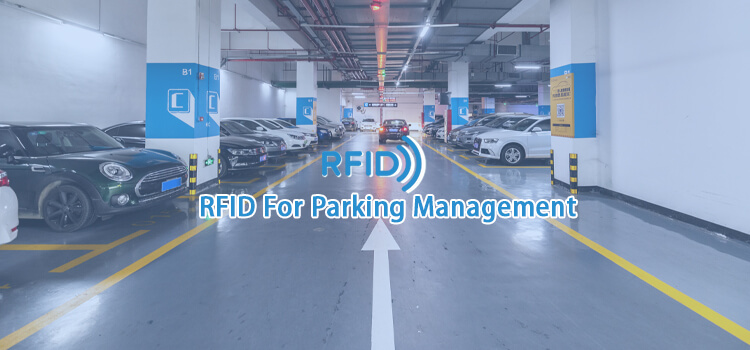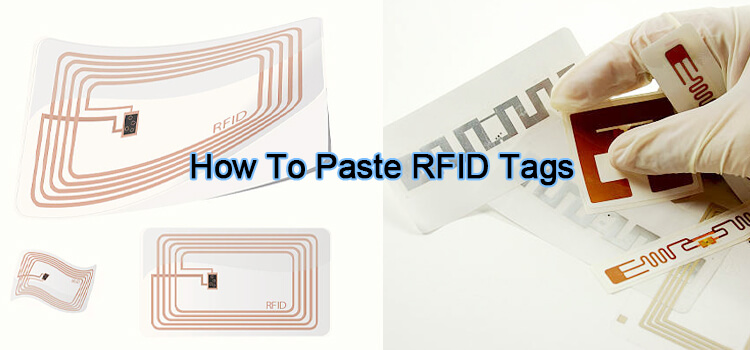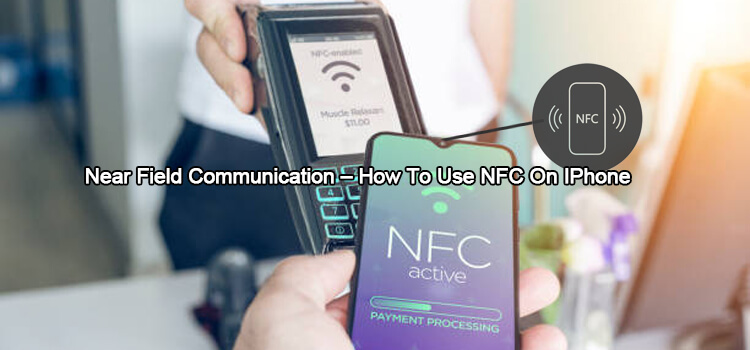Did you know there are approximately 2 billion NFC-enabled devices globally? This means that more than 20% of the world’s population can access NFC.
NFC is a short-range wireless technology that allows two devices to communicate when placed in close proximity to each other. At the center of the communication are NFC tags.
So, what exactly is an NFC tag? This article will explain everything you need to know about NFC tags, including how they work and how you can use nfc tags.
What is NFC?
Near Field Communication (NFC) is one of the most talked-about technologies recently. It has been integrated into many devices, including smartphones, tablets, laptops, and even some smart home appliances.
If you’ve ever used your phone to make an in-store payment or open a door with a smart lock, then you’ve already interacted with NFC. This technology allows two devices to communicate when they are placed within a few centimeters of each other.
The technology was first introduced in 2002 and has been steadily gaining popularity ever since. In 2014, Apple added NFC support to its iPhone line with the release of the iPhone 6. This was a major turning point for NFC, as it helped to legitimize the technology and bring it into the mainstream.
Other devices, such as Android smartphones and the Nintendo Switch, quickly followed suit. NFC is now being used for several purposes, including mobile payments, contactless ticketing, and even data exchange.
What are NFC Tags?
NFC tags are components of an NFC system that store lots of data. They then transfer the data to a reader that interprets it.
NFC tags come in different forms and sizes. They are available as stickers or other sophisticated versions such as wristbands and smart cards.
When activated by an NFC-enabled device, they will automatically transmit the data that has been stored on them. This data can then be read and used by the receiving device.
Since NFC tags can store a wide range of information, they offer countless uses for both personal and business applications. You can use them to store contact information, open a website or app, and send an email.
NFC tags are simple yet incredibly versatile. They are used to automate a wide range of tasks and make our lives easier in many different ways. You can even create your custom NFC tags to suit your unique needs!
In addition, NFC tags come in different forms, including:
- NFC Cards. These are hard cards that come with an embedded NFC chip that can transmit data to another NFC-enabled device. They are common in transit systems, access control systems, and event ticketing. They can also be customized into NFC key fobs, NFC wristbands, or NFC bracelets.
- NFC Stickers. These are the most common types of NFC tags. They have an adhesive backing that allows you to affix them to almost any surface. They can also be customized to your specifications, allowing you to include the data that is most relevant to you.
- NFC Inlays. These tags are usually confused with NFC stickers since they can also offer adhesive backings. They are the most basic and affordable form of NFC tags and are commonly used for product tracking and marketing. They are small, inexpensive, and hard to customize.
So, what is the difference between NFC stickers and NFC inlays? The main difference is that NFC stickers have a layer of protective material on top of the inlay, making them more durable.
This makes them ideal for use in environments where they may be subject to wear and tear. They also have a paper backing layer that allows them to be customized with labels, logos, and other graphics. NFC stickers are also bigger (approximately 30 mm x 30 mm square) than NFC inlays (a maximum of 25 mm x 25 mm).
Additionally, NFC inlays only support thermal printing consisting of 2D barcodes or blank ink text. This limits its flexibility.
Components of an NFC Tag
An NFC tag has three main components:
- An NFC Chip. This is the smallest and most important part. It stores the data in different formats, including numbers, text, URLs, and website links. It then releases this data when excited by the presence of radio waves from a reader.
- An Antenna. This is the main element of the tag that allows it to transmit data when activated by an NFC-enabled device. It consists of a loop antenna and connector pin. The connection between the two elements creates a magnetic field that enables communication between devices.
- A Substrate. This is the material on which the NFC chip and antenna are placed. It provides support for the tag and protects it from damage. The substrate can be made from several materials, including paper, plastic, or metal.
Data is stored on the NFC chip in different formats. The most common format is NDEF, which stands for NFC Data Exchange Format. This format allows the data to be read and processed by any NFC-enabled device.
Additionally, the communication protocols ISO14443A, ISO14443B, and FeliCa are also supported by some NFC chips. These protocols are typically used in transit systems, access control systems, and contactless payments.
Types of NFC Tags
There are five primary types of NFC tags based on functionality, features, and applications. They include:
- NFC Type 1 Tags
These tags are the simplest and most common type of NFC tags. They have a read-only memory that can store up to 93 bytes to 2 kilobytes of data. This memory is expandable to allow for more data storage.
They are typically used for storing static data, such as contact information, URLs, or simple commands. They have a data transmission rate of approximately 106 Kbps and can be read by all NFC-enabled devices.
This NFC tag type is regulated by ISO14443A standards. It has the following features:
- Relatively Inexpensive. This is the most affordable type of NFC tag and is suitable for mass use.
- No Data Collision Protection Mechanism. This is a shortcoming since it can result in data corruption.
- Data Access. You can get these tags in Read/Write or Read-Only mode.
Some of its compliant products include Innovision Topaz. The tags are also very versatile and can be used in a variety of applications that do not require large memory storage.
- NFC Type 2 Tags
These NFC tags have an anti-collision protocol that allows for multiple devices to read the tag simultaneously without corrupting the data. They have a data transmission rate of 106 kbps and can store 48 bytes (less than Type 1 NFC tags). However, you can expand this memory to 144 bytes.
The tags are compliant with ISO14443A standards and have the following features:
- Highly Affordable. Just like Type 1 tags, Type 2 NFC tags are relatively inexpensive and suitable for mass use.
- Data Access. You can get these tags in Read/Write or Read-Only mode.
- Compliant Products. This tag type is compliant with products such as Ultralight C, Ultralight, and NXP Mifare.
While this card has the same data transfer speed as Type 1, the anti-collision feature makes it more suitable for mass-market applications. They have better functionality and are used for event ticketing, low-value transactions, URL redirects, and access control.
- NFC Type 3 Tags
These NFC tags are more enhanced than both Type 1 and Type 2 tags. They are also more expensive. JIS-X-6319-4 and ISO 18092 standards govern these tags. They have the following features:
- Compliant Products. These tags are compliant with products such as Sony FeliCa and Nokia 6300.
- Fast Data Transfer Speed. They have a data transmission rate of 212 kbps or 424 kbps, double that of Type 1 and Type 2 NFC tags.
- Memory Storage. 1/4/9 KB
- Multi-Device Data Access. Just like Type 2 tags, these tags have an anti-collision protocol that allows for multiple devices to read the tag simultaneously without corrupting the data.
- Data Access. You can get these tags in Read/Write or Read-Only mode.
These tags are used for high-value transactions, electronic IDs, e-ticketing, membership cards, loyalty programs, and access control. The added features make them more expensive than Type 1 and Type 2 tags.
- NFC Type 4 Tags
These tags provide much more memory storage than the previous three NFC tag types. They can store up to 32 kilobytes of data and have a faster data transfer rate of 106/212/424 kilobits per second. NXP DESFire Tag (ISO-14443A) standard regulates these NFC tags. They have the following features:
- Compliant Products. These tags are compatible with products such as NXP DESFire and NXP SmartMX-JCOP.
- Anti-Collision Protocol. You can use these tags with multiple devices simultaneously without worrying about data corruption.
- Data Access. You can get these tags in Read/Write or Read-Only mode.
- Price. They are more expensive than the first three types of NFC tags.
The Type 4 NFC tags have several data protection mechanisms and are used for electronic passports, high-value transactions, public transport ticketing, access control, and identity management.
They support the ISO 7816 security protocols that allow self-modification of data (encrypted) and dynamic user authentication.
- Type 5 NFC Tags
These tags are relatively inexpensive. They have a larger memory capacity of 192 Bytes/ 768 bytes/ 3584 bytes. They follow ISO/IEC 15693 and MF1 IC S50 standards for operation. They have the following features:
- Compliant Products. These tags are compliant with NXP Mifare Classic 1K, NXP Mifare Classic Mini, and NXP Mifare Classic 4K.
- Data Access. Read/Write or Read-Only mode.
- Anti-Collision Mechanism. Available. You can use these tags with multiple devices simultaneously without worrying about data corruption.
- Data Transfer Speed. 106Kbps
These tags are used for tracking assets, healthcare management, access control, and public transport ticketing.
When choosing the type of NFC tag to buy, you need to consider the following factors:
- Security Required. You need to consider the security protocols required for your application. If you are working with sensitive data, you need to choose a tag that supports encryption, preferably NFC type 3 and above.
- Memory Storage Required. The amount of data you need to store will help you determine how much memory you need.
- Read/Write or Read-Only Mode. You also need to decide whether you want the tag to be read-only or read/write. If you only need to store data, you can choose a read-only tag. If you need to write data using NFC writing tools, you must choose a read/write tag.
- The Speed Required. If you need a fast data transfer rate, you will need to choose an NFC tag with a high kbps rating, preferably 106/212/424kbps. Overall, Type 1 & Type 2 NFC tags are only ideal for low-value transactions.
Types of NFC Tag Chips
Every NFC tag has an integrated circuit (IC) chip that stores data and operationalize the tag. Knowing the differences between the various types of IC chips will help you choose the best NFC tag for your application.
Some common NFC tag chips are the following:
- NTAG 213/215. These chips are commonly used in indoor applications and provide a balance between storage capacity and data transfer speed. Additionally, NTAG 215 is the only tag used for creating amiibos.
- NTAG 216. These chips are used for more demanding applications that need a higher data storage capacity and faster data transfer speed.
- MIFARE Ultralight EV1/EV2. These chips are ideal for low-cost, low-volume applications that require only a small amount of memory. Because they are very flexible and can be read by more devices, they are commonly used in promotional campaigns and public transportation.
- MIFARE DESFire EV1/EV2. These chips offer high data transfer speed and security. They are used in more demanding applications such as access control, identity management, and electronic passports.
Selecting the NFC chip you need is a crucial step in the buying process. You need to consider your budget, data storage requirements, and operating environment to choose the right chip that will meet your needs.
Overall, Type 5 NFC tags are the most versatile and offer the best balance of features and price. Always ensure that you choose a reputable and reliable NFC tag manufacturer to get high-quality tags that will suit your needs.

